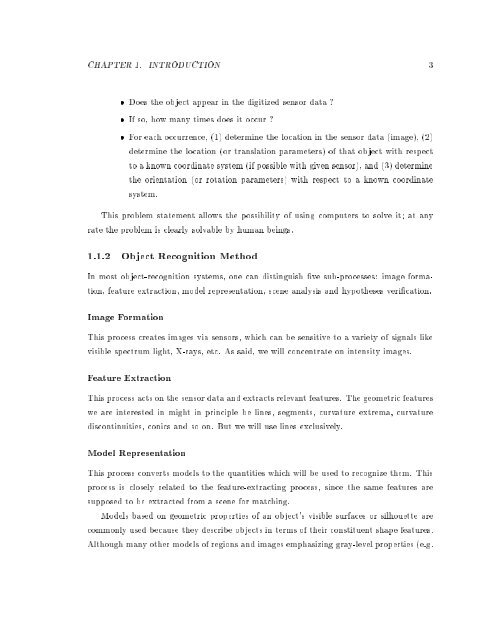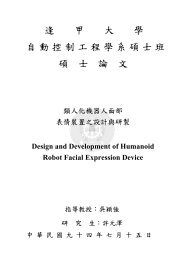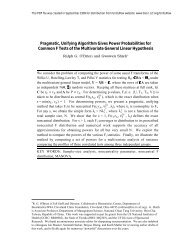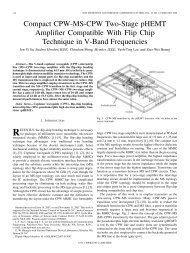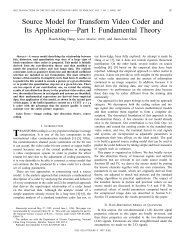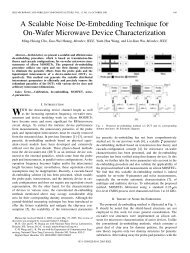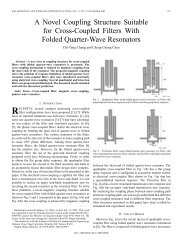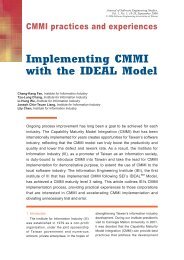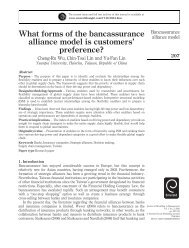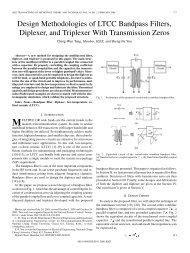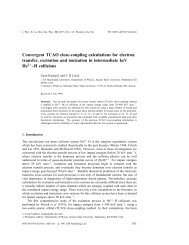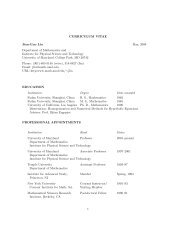A Probabilistic Approach to Geometric Hashing using Line Features
A Probabilistic Approach to Geometric Hashing using Line Features
A Probabilistic Approach to Geometric Hashing using Line Features
You also want an ePaper? Increase the reach of your titles
YUMPU automatically turns print PDFs into web optimized ePapers that Google loves.
CHAPTER 1. INTRODUCTION 3<br />
æ Does the object appear in the digitized sensor data ?<br />
æ If so, how many times does it occur ?<br />
æ For each occurrence, è1è determine the location in the sensor data èimageè, è2è<br />
determine the location èor translation parametersè of that object with respect<br />
<strong>to</strong> a known coordinate system èif possible with given sensorè, and è3è determine<br />
the orientation èor rotation parametersè with respect <strong>to</strong> a known coordinate<br />
system.<br />
This problem statement allows the possibility of <strong>using</strong> computers <strong>to</strong> solve it; at any<br />
rate the problem is clearly solvable by human beings.<br />
1.1.2 Object Recognition Method<br />
In most object-recognition systems, one can distinguish æve sub-processes: image formation,<br />
feature extraction, model representation, scene analysis and hypotheses veriæcation.<br />
Image Formation<br />
This process creates images via sensors, which can be sensitive <strong>to</strong>avariety of signals like<br />
visible spectrum light, X-rays, etc. As said, we will concentrate on intensity images.<br />
Feature Extraction<br />
This process acts on the sensor data and extracts relevant features. The geometric features<br />
we are interested in might in principle be lines, segments, curvature extrema, curvature<br />
discontinuities, conics and so on. But we will use lines exclusively.<br />
Model Representation<br />
This process converts models <strong>to</strong> the quantities which will be used <strong>to</strong> recognize them. This<br />
process is closely related <strong>to</strong> the feature-extracting process, since the same features are<br />
supposed <strong>to</strong> be extracted from a scene for matching.<br />
Models based on geometric properties of an object's visible surfaces or silhouette are<br />
commonly used because they describe objects in terms of their constituent shape features.<br />
Although many other models of regions and images emphasizing gray-level properties èe.g.


